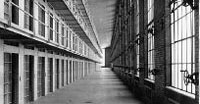Aitkin County Historical Society, Depot Museum, and Log Museum
The Society operates a museum complex, complete with research resources, special exhibits, and a museum gift shop. The Depot Museum is housed in the historic 1916 Northern Pacific Depot. The building is listed on the National Register of Historic Places. The museum features a rotating schedule of exhibits regarding the heritage of Aitkin County. Riverboating on the upper Mississippi, native culture, and unique artifacts are explored and displayed in the exhibit halls. The Log Museum was the first home of the Society and was constructed in 1950 with native cedar logs. It was originally located on the court house lawn and moved to its present location in the mid-70s. Exhibits relate to the county's logging heritage, agricultural implements, and tools from the building trades.
The society offers occasional living history events, research library access, and educational and recreational events; the museums offer exhibits and tours.
